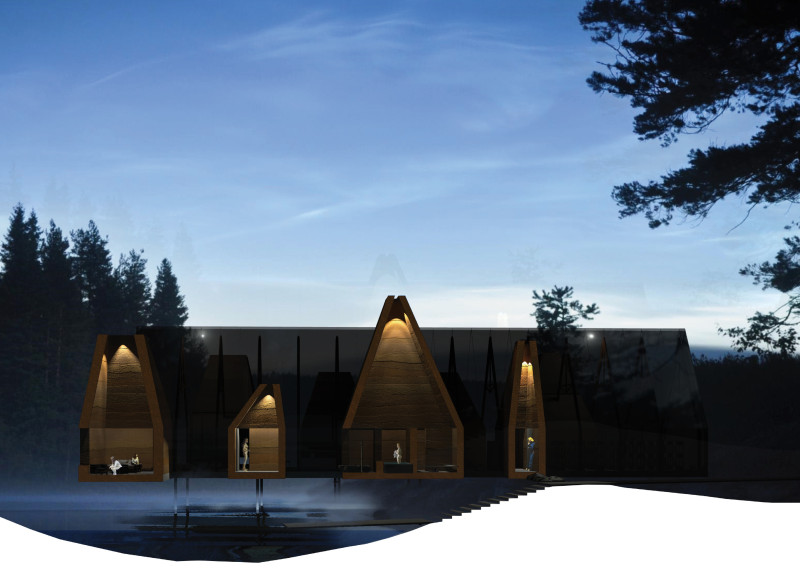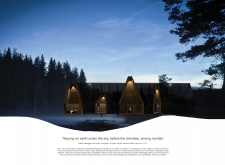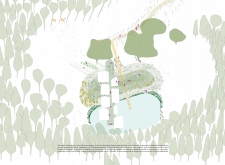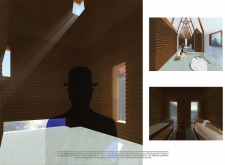5 key facts about this project
### Project Overview
This architectural design is situated within a forested landscape, aiming to integrate structural elements with the natural environment while enhancing human interaction. The project employs modern construction techniques alongside traditional materials, fostering both cultural significance and a deep connection to its surroundings. Central to the design philosophy is the contemplation of human existence and our relationship with nature, as underscored by philosophical references.
### Materiality and Spatial Configuration
The project emphasizes a thoughtful selection of materials to cultivate a sensory-rich environment. Key components include:
- **Rammed Earth**: Serves as the primary structural material, offering thermal advantages and durability while reflecting rustic aesthetics.
- **Polycarbonate**: Used in certain areas to allow natural illumination while shielding the interior from outdoor elements.
- **Timber and Natural Stone**: Enhance the visual and tactile experience within the spaces, contributing to an inviting ambiance through their diverse textures and colors.
The design features interconnected buildings that promote exploration and movement within the landscape. Gathering spaces are configured to facilitate community interaction, characterized by expansive windows that blend indoors and outdoors. Private quarters provide opportunities for reflection with materials designed to create a soothing atmosphere. The inclusion of nature trails and water features not only reinforces the ecological integrity of the site but also encourages engagement with the environment.
### Engagement with Nature
A distinctive aspect of the project lies in its focus on framing the elements of nature through architectural openings. Each window and skylight is carefully positioned to enhance internal lighting and offer curated views, transforming ordinary moments into significant experiences. This design approach reconsiders the conventional roles of architecture, promoting spaces that emphasize contemplation and interaction instead of solely functional uses.
The endeavor challenges traditional perspectives on human interventions in nature, advocating for an architecture that supports ecological renewal. It positions built environments as active participants in the natural world, fostering a dynamic relationship between humanity and the environment. Through these design principles, the project underscores the importance of coexisting sustainably with natural landscapes.

























































